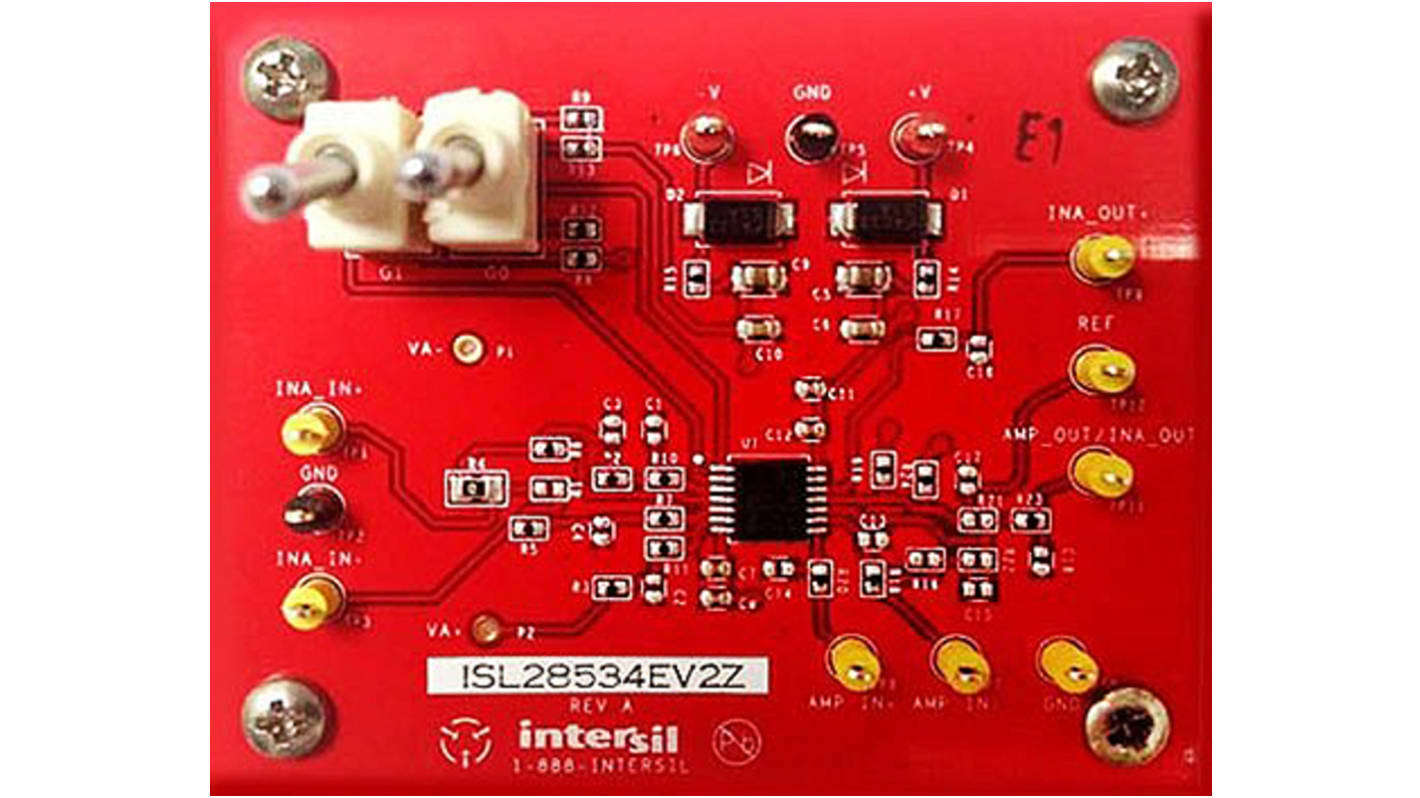Renesas Electronics ISL28533EV2Z, Instrumentation Amplifier Evaluation Board for ISL28533
- RS Stock No.:
- 121-5925
- Mfr. Part No.:
- ISL28533EV2Z
- Brand:
- Renesas Electronics

Currently unavailable
We don't know if this item will be back in stock, RS intend to remove it from our range soon.
- RS Stock No.:
- 121-5925
- Mfr. Part No.:
- ISL28533EV2Z
- Brand:
- Renesas Electronics
Specifications
Technical Reference
Legislation and Compliance
Product Details
Find similar products by selecting one or more attributes.
Select all | Attribute | Value |
|---|---|---|
| Brand | Renesas Electronics | |
| Analogue Function | Instrumentation Amplifier | |
| Kit Classification | Evaluation Board | |
| Featured Device | ISL28533 | |
Select all | ||
|---|---|---|
Brand Renesas Electronics | ||
Analogue Function Instrumentation Amplifier | ||
Kit Classification Evaluation Board | ||
Featured Device ISL28533 | ||
- COO (Country of Origin):
- US
ISL2853xEV2Z & ISL2863xEV2Z PGA Instrumentation Amplifier Evaluation Boards, Intersil
The ISL2853xEV2Z and ISL2863xEV2Z boards allow simple evaluation of the ISL2853x and ISL2863x, 5 V, Rail-to-Rail I/O, Zero Drift, Programmable Gain Instrumentation Amplifiers.
High precision front-end amplifier
Pin selectable 9 gain settings: G = 1 to 1000
RFI filtered inputs improve EMI rejection
Single power supply from 2.5 V to 5.5 V
Low input offset: 5 μV, Max.
Low inputs offset drift: 50 nV/°C, Max.
High CMRR: 138 dB, G = 100
Low gain error: 0.4%, Max.
Gain bandwidth: 2.3 MHz
Input voltage noise 0.4 μV peak-peak
Pin selectable 9 gain settings: G = 1 to 1000
RFI filtered inputs improve EMI rejection
Single power supply from 2.5 V to 5.5 V
Low input offset: 5 μV, Max.
Low inputs offset drift: 50 nV/°C, Max.
High CMRR: 138 dB, G = 100
Low gain error: 0.4%, Max.
Gain bandwidth: 2.3 MHz
Input voltage noise 0.4 μV peak-peak
Instrumentation Amplifiers, Intersil
Instrumentation Amplifier is a type of differential amplifier that has been outfitted with input buffer amplifiers, which eliminate the need for input impedance matching. Characteristics include very low DC offset, low drift, low noise, very high open-loop gain, very high common-mode rejection ratio, and very high input impedances.
